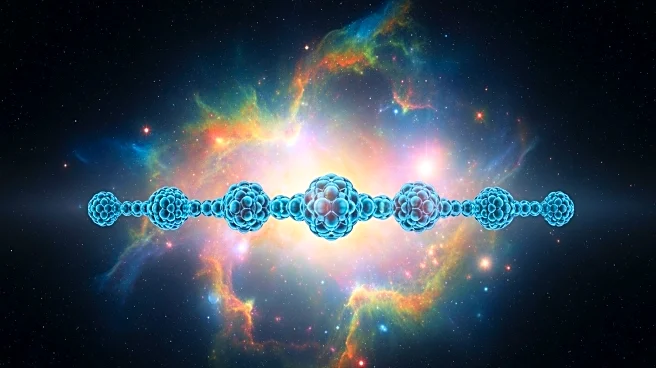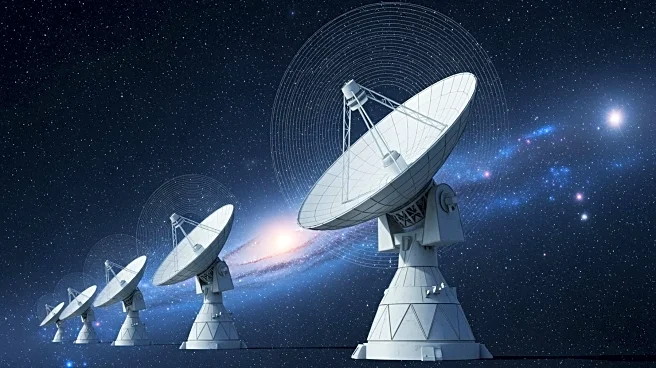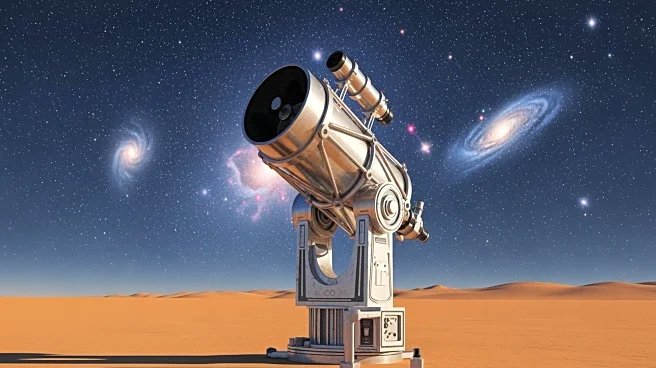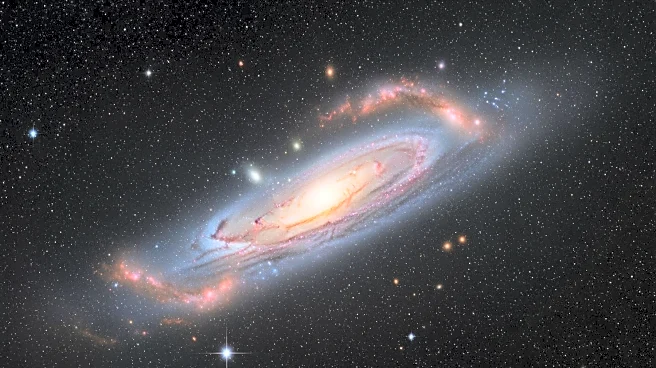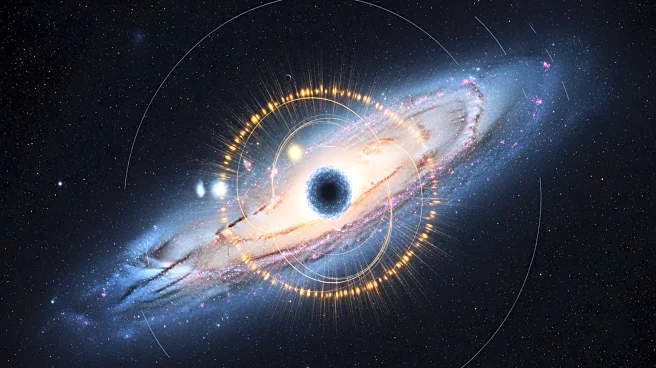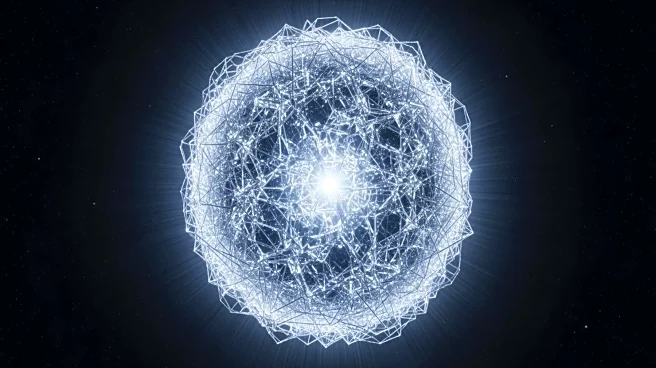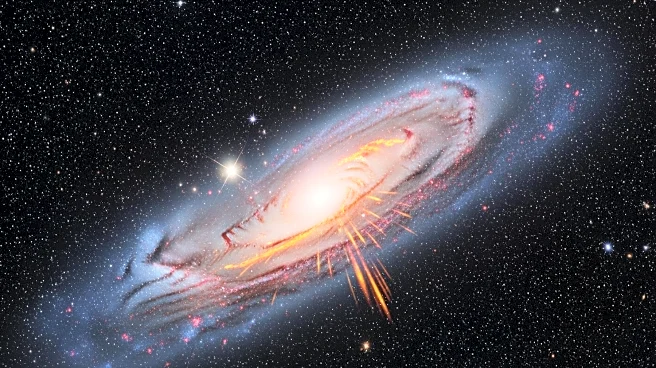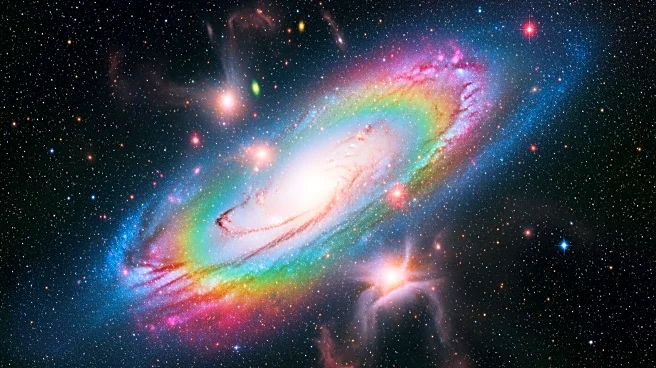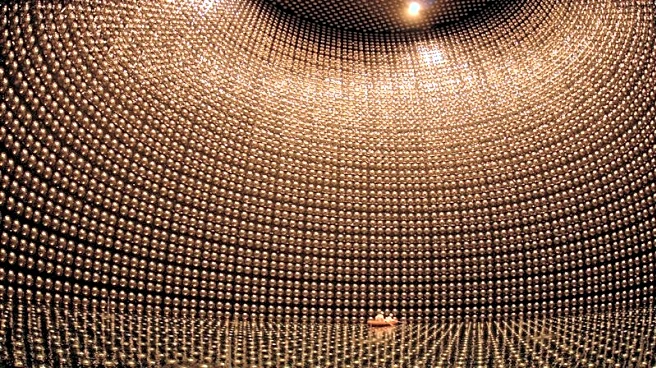What's Happening?
A new model of cosmic inflation has been proposed by scientists, suggesting that the universe's rapid expansion occurred in a warm environment filled with known elementary particles. This model challenges
the widely accepted hypothesis that the early universe was cold and empty, requiring an unknown process to ignite the hot plasma observed at the Big Bang. The study, published in Physical Review Letters, highlights the role of the strong force, a fundamental interaction in the Standard Model of particle physics, in measuring the first fractions of a second of the universe on Earth. The model suggests that gluons, which mediate the strong force, bind to a field of hypothetical axion-like particles, providing sufficient energy to heat the expanding universe, making warm inflation feasible.
Why It's Important?
The development of this new model is significant as it offers a fresh perspective on the early moments of the universe, potentially making them accessible to measurements on Earth. By utilizing well-studied particles and forces within the Standard Model, the model provides a more grounded approach to understanding cosmic inflation. Additionally, the existence of cosmic axions or related particles could address several unresolved questions in particle physics, such as the nature of dark matter. This has implications for ongoing experiments aimed at detecting these particles, including MADMAX, which could validate the warm inflation model and advance our understanding of the universe's origins.
What's Next?
Future experiments, such as those involving MADMAX, are expected to test the warm inflation model by attempting to detect cosmic axions or related particles. Success in these experiments could confirm the model's predictions and provide insights into the nature of dark matter. The scientific community is likely to continue exploring the implications of this model, potentially leading to new discoveries in cosmology and particle physics. As research progresses, the model may influence the development of new theories and experiments aimed at understanding the universe's early moments.
Beyond the Headlines
The introduction of this model may prompt ethical and philosophical discussions about the nature of the universe and our understanding of its origins. The potential discovery of cosmic axions could lead to a reevaluation of existing theories in particle physics, influencing both scientific and cultural perspectives on the universe. Additionally, the model's reliance on well-studied particles and forces may encourage a shift towards more grounded approaches in cosmological research, emphasizing the importance of empirical evidence in scientific inquiry.
